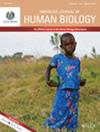Association between adherence to 24-h movement guidelines and sociodemographic factors among Malaysian preschoolers: Findings from SEANUTS II Malaysia
Abstract
Background
Adhering to 24-h movement guidelines (24-hMG) have health benefits for young children; yet research on Malaysian preschoolers' movement behaviors is limited. This study investigates the association between adherence to 24-hMG and sociodemographic factors of Malaysian preschoolers.
Methods
Data from 939 preschoolers aged 3–6 years (mean age = 4.83 ± 0.04 years, 53.7% boys) from the Second South East Asian Nutrition Surveys (SEANUTS II) Malaysia study was analyzed. Socio-demography, physical activity, sedentary behaviors, and sleep were parent-reported via questionnaire. Associations between adherence of 24-hMG and sociodemographic factors were analyzed using complex samples logistic regression.
Results
Only 12.1% of preschoolers adhered to the overall 24-hMG, and 67.1%, 54.7%, and 42.7% of preschoolers adhered to physical activity, sleep, and sedentary behavior guidelines, respectively; while 6.8% did not meet any guidelines. Compared to 3–4-year olds, preschoolers aged 5–6 years had higher odds of adhering to physical activity guidelines, sedentary behavior guidelines, and overall 24-hMG, but lower odds of adhering to sleep guidelines. Chinese and Indian preschoolers were more likely to adhere to sedentary behavior guidelines than Malay preschoolers; however, Chinese preschoolers had lower odds of adhering to physical activity guidelines. Paternal tertiary education was associated with a higher likelihood of adherence to sleep guidelines.
Conclusion
Our findings suggest that adherence to 24-hMG among Malaysian preschoolers is associated with age, ethnicity, and paternal education level. This underscores the importance of targeted interventions and health awareness program to promote healthy movement behaviors, particularly among children under 5, ethnic minorities, and educationally disadvantaged families.

 求助内容:
求助内容: 应助结果提醒方式:
应助结果提醒方式:


